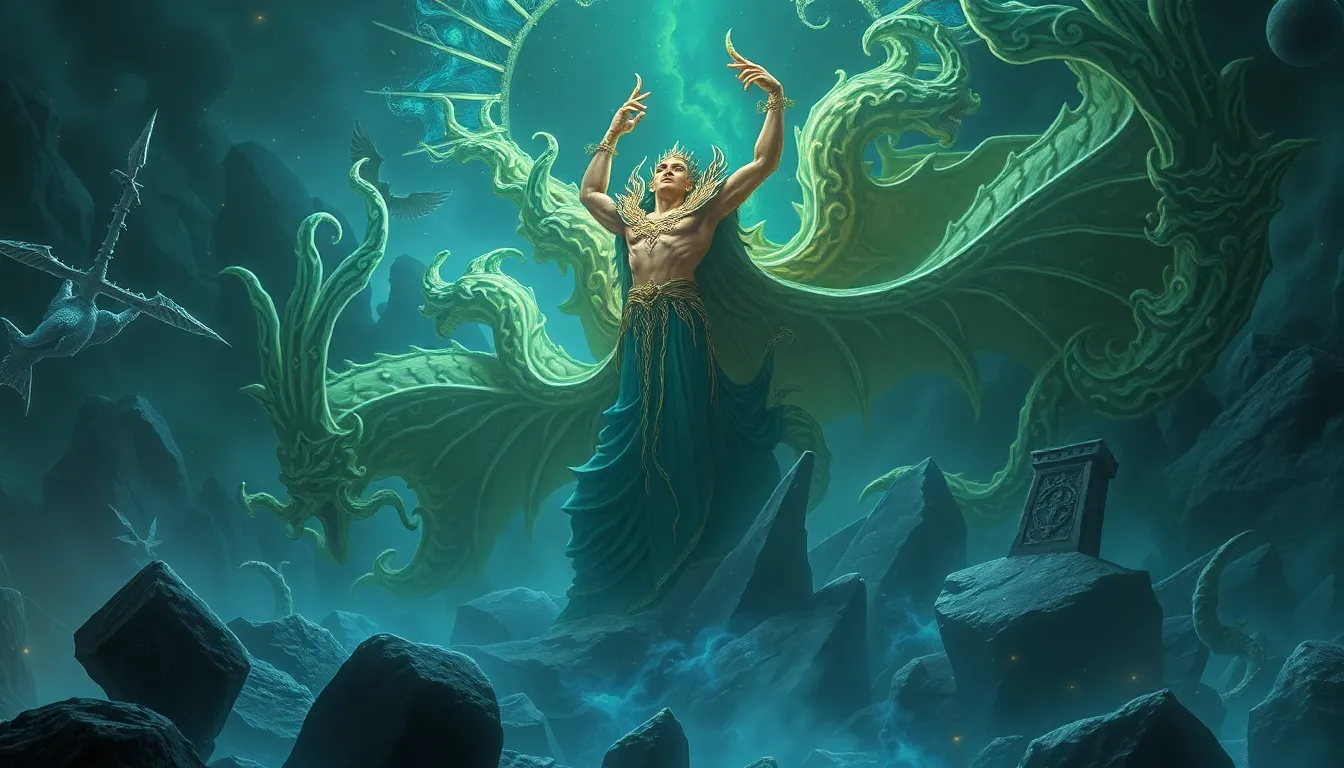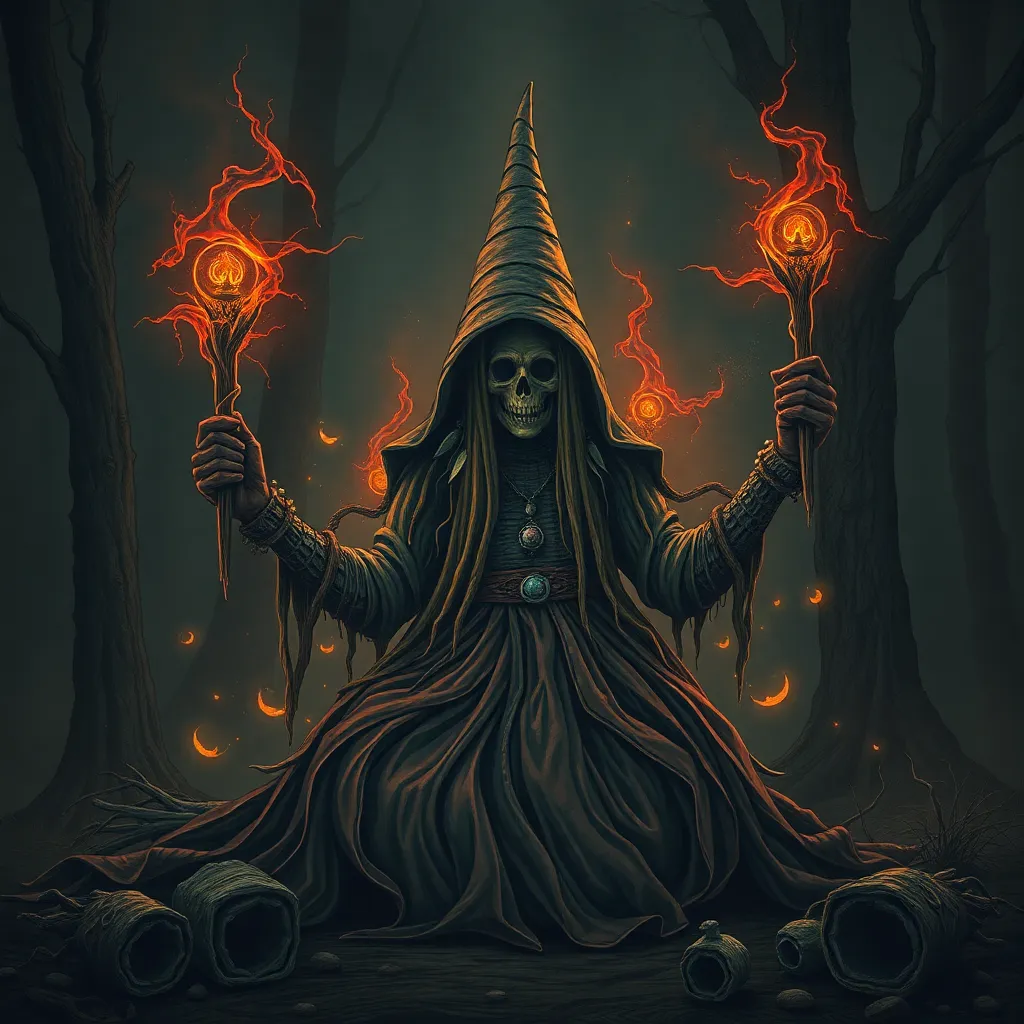The Enchanted Realms of Ancient Deities: Where Myths Come Alive
1. Introduction: The Allure of Ancient Myths
Throughout history, ancient myths have captivated the human imagination, serving as vital narratives that explain the unexplainable and provide insight into the human experience. These myths often revolve around deities—powerful beings that govern various aspects of life and nature. From the thunderous skies to the depths of the ocean, the realms inhabited by these deities are as diverse as the cultures that created them. This article aims to explore the enchanted worlds of ancient deities, uncovering the significance of these myths and the realms they inhabit.
2. The Birth of Mythology: Understanding Ancient Civilizations
Mythology can be defined as a collection of stories and beliefs that explain the origins of the world, natural phenomena, and the human experience. In ancient societies, mythology served several purposes:
- To explain the unexplainable, such as natural disasters or seasonal changes.
- To provide moral guidance and societal norms.
- To create a sense of community and shared identity among people.
Key civilizations that contributed to the rich tapestry of mythology include:
- Mesopotamia: Home to gods like Enlil and Ishtar, their myths often revolved around creation and the forces of nature.
- Egypt: With deities such as Ra and Osiris, Egyptian mythology intertwined life, death, and the afterlife.
- Greece: Featuring a pantheon led by Zeus, Greek mythology explored themes of heroism, fate, and human emotions.
- India: Rich in spiritual narratives, Hindu mythology includes deities like Vishnu and Shiva, representing cosmic order and transformation.
These civilizations shaped the perception of deities and their realms, laying the groundwork for myths that continue to resonate today.
3. The Pantheon of Deities: A Closer Look at Key Figures
Across various cultures, the pantheon of deities is filled with intriguing figures, each with unique attributes and domains:
- Zeus (Greek): The king of the gods, ruler of Mount Olympus, associated with thunder and justice.
- Ra (Egyptian): The sun god, representing creation and life, often depicted traveling the sky in his solar barque.
- Odin (Norse): The all-father of the Norse pantheon, associated with wisdom, war, and death, known for his quest for knowledge.
- Vishnu (Hindu): The preserver god, who maintains cosmic order, often incarnates in various forms to restore dharma.
These deities not only governed the natural world but also interacted with humanity, shaping the course of human events through their actions and relationships.
4. The Enchanted Realms: Where Deities Reside
Each ancient deity is associated with a specific realm that symbolizes their powers and narratives. Some notable realms include:
- Olympus: The majestic mountain in Greece where the gods reside, representing both divine authority and the ideal of beauty.
- The Duat: The ancient Egyptian underworld, a complex realm of the afterlife where souls journey after death.
- Asgard: The stronghold of the Norse gods, characterized by its grandeur and the Bifröst, the rainbow bridge connecting it to Midgard.
- Svarga: The Hindu heaven, a celestial kingdom where virtuous souls enjoy eternal bliss.
These realms serve not only as homes for the gods but also as settings for epic tales of heroism, conflict, and moral lessons.
5. The Intersection of Myths and Nature: Sacred Landscapes
Ancient myths often reflect the natural world, intertwining sacred landscapes with the narratives of deities. Sacred sites such as mountains, rivers, and forests were imbued with spiritual significance:
- Mount Olympus: The highest mountain in Greece, revered as the dwelling place of the gods.
- The Nile River: In Egypt, the river was seen as a life-giving force, integral to the myths surrounding creation and rebirth.
- Ganges River: In India, this river is personified as the goddess Ganga, symbolizing purity and spiritual cleansing.
The geography of these sacred sites often shaped the attributes and stories of the deities, highlighting the deep connection between mythology and the physical world.
6. Mythical Creatures and Companions: The Deities’ Allies
In addition to deities, ancient myths abound with mythical creatures that serve as allies, adversaries, or symbols of the gods. Some notable examples include:
- Griffins: Creatures with the body of a lion and the head of an eagle, symbolizing strength and majesty, often associated with the sun god.
- Dragons: Powerful beings featured in various cultures, often representing chaos and the primal forces of nature.
- Centaurs: Half-human, half-horse beings in Greek mythology, embodying the duality of civilization and wildness.
These creatures often play significant roles in the stories of deities, participating in adventures, battles, and moral lessons.
7. The Legacy of Ancient Myths in Modern Culture
The influence of ancient deities and their realms extends into modern culture, shaping literature, art, and popular media. Examples include:
- Literature: Many novels and poems draw inspiration from ancient myths, reinterpreting the tales for contemporary audiences.
- Art: Artists have long depicted deities and mythical scenes, celebrating their beauty and complexity.
- Popular Media: Movies and video games often incorporate mythological themes, introducing new generations to these timeless stories.
Furthermore, there is a revival of interest in ancient myths within modern spirituality, as people seek to reconnect with these narratives and their deeper meanings.
8. Scholarly Interpretations: The Psychology of Myths
Scholars have sought to understand the psychological significance of myths, employing various theories, such as Jungian archetypes. Myths serve as a means of:
- Understanding human behavior and emotions through the archetypal figures of deities.
- Exploring collective fears, hopes, and the quest for meaning in a complex world.
- Providing frameworks for societal norms and moral guidance.
In essence, ancient deities represent not just the gods of yore but also the eternal aspects of the human psyche, making their stories relevant across time and culture.


